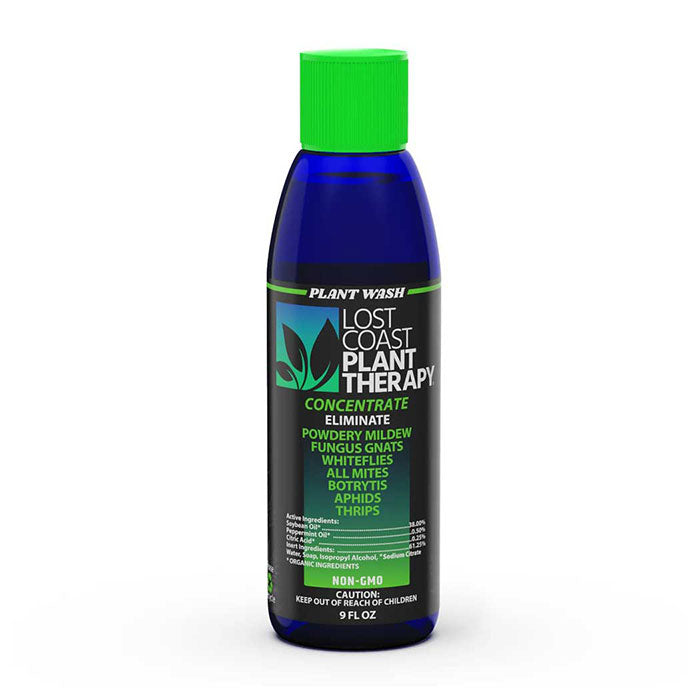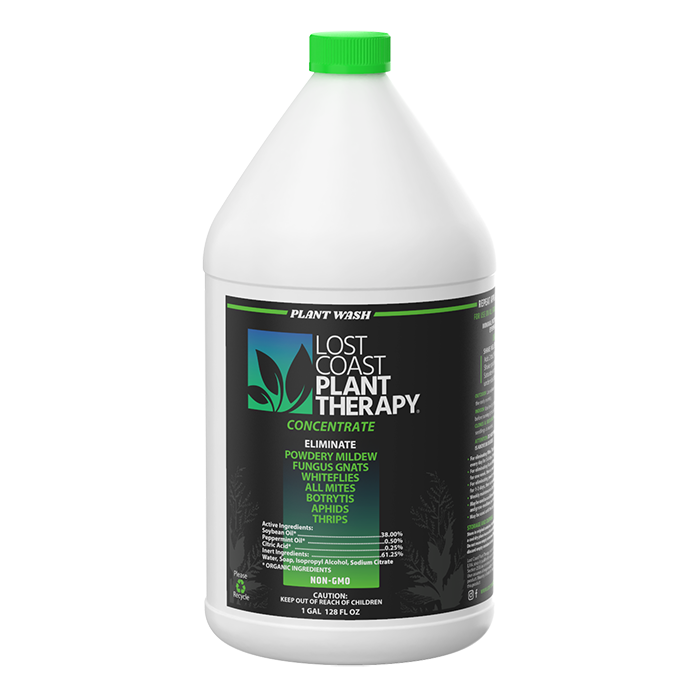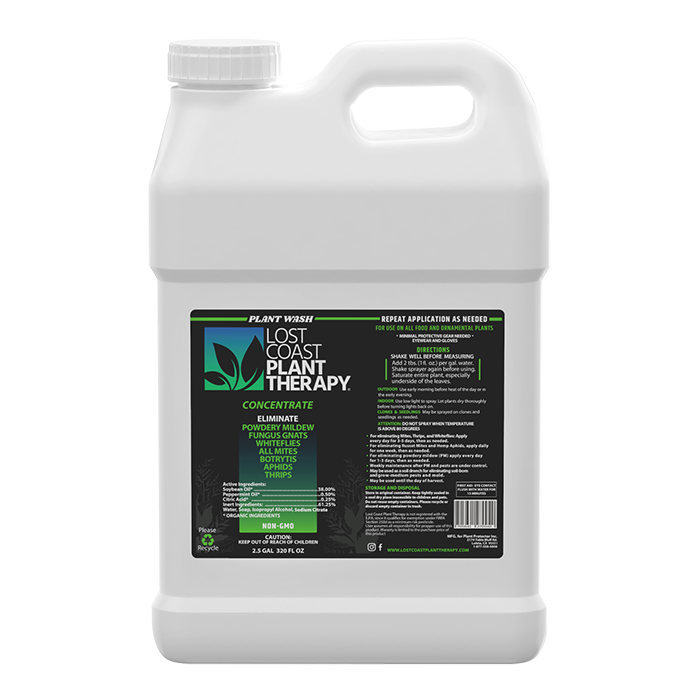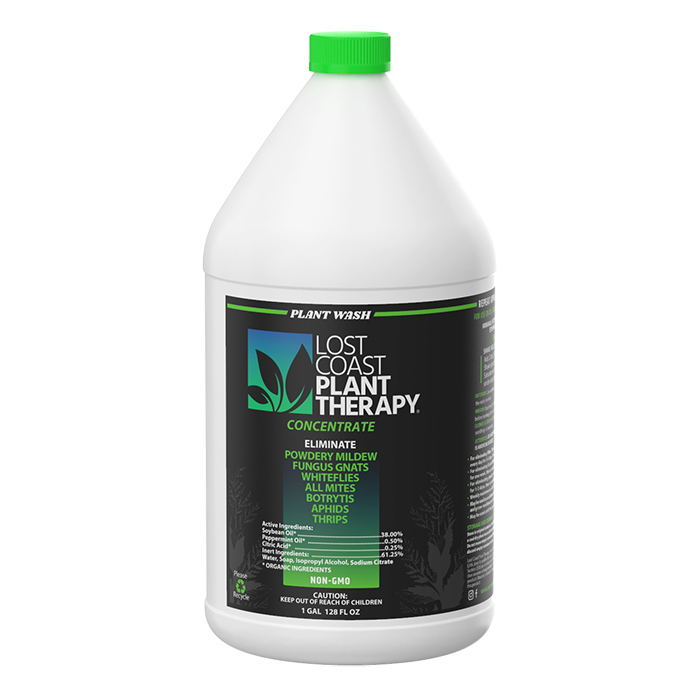Lost Coast Plant Therapy Questions & Answers
Q: Can I use Lost Coast Plant Therapy as a preventative on my plants?
A: Yes. We recommend use 1 day a week, or 2-3 times a month for preventative care on your plants. Remember, this product works by having contact with insects or disease to kill it. Using it as a preventative will kill the soft body insects and mold spores it comes into contacts, that you can’t easily see. It cannot stop the insects and disease from coming into your garden. It can help with minimizing their presence once they arrive, and minimize their ability to take hold.
Q: What are your directions to eliminate soft bodied insects and mold?
A: Read your bottle label and follow the directions before use. There is not one absolute answer to this question. Our product works to suffocate and dehydrate soft body insects and disease on contact. If our product does not have contact with the target insect or mold and fungus it can’t kill it. Thorough application is important. Take your time and completely saturate your plants.
Q: What causes burning?
A: It is very hard to burn or stress plants with our product. There are a variety of factors that can contribute to burning below are the only ones we know of related to our product: Do not apply Lost Coast Plant Therapy in high heat (80 degrees or higher) or mid day high heat. Even plain water can burn plants if applied during high heat. We suggest you water your plants the day before use of Lost Coast Plant Therapy if possible. Make sure your sprayer/applicator line is clear of old product or other people’s product. Residue of other products can burn your plants. Mixing out product with other people’s products can have unknown interactions, so we do not guarantee what mixing our product with other products will do. Our product separates, so if you spray without mixing you can get a high dose of one ingredient. Always mix well before and during application.
Q: Do you need protective gear?
A: Please always follow directions on your label. Although our product is completely non-toxic, common sense caution applies.
Q: What is the best time of the day to spray the product?
A: Use when temperature is 80 degrees or less and apply in low light, early morning or evening. We like mornings best, as the plants have not yet been stressed by heat or light. This is when they still have moisture in the leaves and flower.
Q: Do you recommend using your product during flowering?
A: You can use our product at any stage of growing up until the day of harvest.
Q: Any tips for heavy infestations?
A: Follow the directions on your bottle. Heavy infestations require diligent and thorough application of our product. You will want to apply every day for 3-5 days. It depends on the lifecycle of the insect you are battling. For heavy infestations, you can also add 1-3oz of any percentage strength isopropyl alcohol per gallon to the normal 1oz of Lost Coast Plant Therapy per gallon of water for soil drench or spraying.
Q: How long is the product good for?
A: 4 year shelf life if stored in cool dark place, with the lid tightly sealed.
Q: How long does the mixture last?
A: The product can last up to a week and a half when mixed. The mixture needs to be stored in a cool dry place, with a tightly sealed lid. No open containers. When using again later, you need to shake very well, clear the lines of your sprayer, then shake again during use.
Q: Can your product be used as a soil drench?
A: Yes it can! Just add 1oz of our concentrate to 1 gallon of water, same ratio as for spraying. For very stubborn infestations in the soil, you can also increase to 2oz of concentrate per gallon, and add an additional 1 oz of isopropyl alcohol. We suggest you water your plants the day before use of Lost Coast Plant Therapy if possible. Do not use as a soil drench if your soil is completely dried out. Water first, then apply as a soil drench. ALWAYS test new methods or amounts on a single plant first.
Q: Does your product kill ladybugs and wasps?
A: Our product does not kill ladybugs or wasps! It is also safe for bees and praying mantis.









